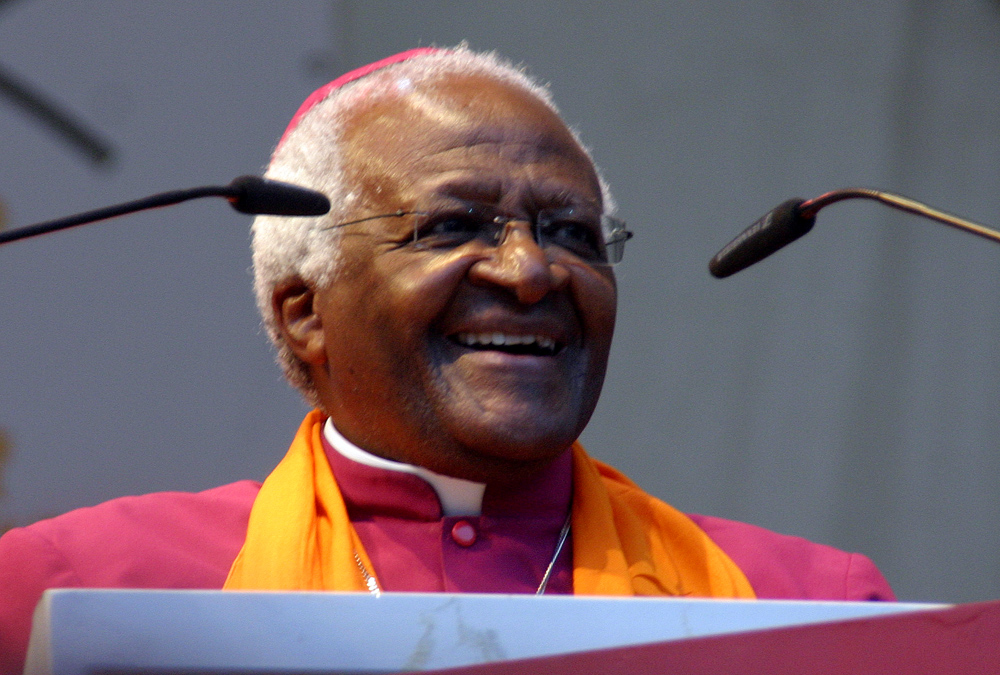CAN DREAMS FORETELL OR SOLVE PROBLEMS?

No concrete answer has been offered so far to the phenomenon of dreams which is shrouded in mystery. It has fascinated philosophers and scientists alike over the years. While most of the dreams give vent to our repressed desires, feelings and longings that we cannot fulfil in our waking state due to sanctions of morality or other social taboos, as theorised by Sigmund Freud, researchers, contrary to his assertions, have also found a psychic link with dreams that have predicted future events and provided clear answers to most difficult problems, leading to discoveries and inventions.
Dreams fall into two main categories: day-dreams and night-dreams. Day-dreams are very common among adolescents when they tend to be oblivious to the physical world around them and choose to remain in a realm of phantasy. There are three types of day-dreams: 1. Pleasant day-dreams of an agreeable nature. 2. Day-dreams allowing the subject to realise his/her craving for leadership and self-display that are typical of a young mind. 3. Day-dreams causing anxiety and hence a brooding disposition.
Night-dreams that concern this article and that are usually described as “dreams”, consist of three essential features, similar to day-dreams. Firstly, the images are presented in a very incoherent manner with contradictions: a human being can change into an animal. Secondly, the scenes that are seen during sleep are quite real and tangible right up to the end of the dream. Thirdly, the dream is often presented in a mask: the objects we see in our day-to-day life take on a disguised form and become symbols for something else. This symbolism in dreams has led to the art of the interpretation of dreams. If you dream of a mountain, it might signify an insurmountable obstacle. If you dream of flying with the ease of a bird, it might symbolise the achievement of your target without difficulty.
Dr. Sigmund Freud (1856-1939), the well-known Austrian psychologist and hypnotist, postulated that the non-fulfilment of a desire or a wish while we are awake in the conscious state due to repression resulting from the rigid codes of morals, decorum or etiquette laid down by society, is the underlying motive of all dreams. These social codes that control our behaviour act as a “mental policeman” which Freud calls a “censor”. But when we are asleep, this censor becomes “deactivated” and our unfulfilled or suppressed desires are gratified symbolically. The wish so fulfilled often puts on a mask and its original nature has to be analysed carefully.
An adult with a dormant urge to amass riches might dream of finding a copper coin in the sand, and then silver, and then more and more coins till he wakes up and loses all. Polar explorers might have recurring dreams of warm, sunny and green fields. “Sex dreams” or “wet dreams” of sexually abstinent persons or adolescents of both sexes reaching the age of puberty (when they experience spontaneous orgasm in a dream) may be cited as a valid proof in support of Freud’s theory of suppressed sexual longings.
According to Freud, the repressed desires and emotions are generally “sexual” in nature. Undoubtedly, he uses the term “sex” in a wider context to embrace all that is related to the sentiments of affection and love. He traces this strong motive to the thumb-sucking activity of an infant during sleep.
New theories to account for why we dream
Many other theories have been expounded recently to explain the phenomenon of dreams:
- Dreams are the result of our brains trying to interpret external stimuli (such as a dog’s bark, music, or a baby’s cry) during sleep.
- Dreams help to “clean up” clutter from the mind, refreshing the brain for the following day.
- We dream to forget, as our brains have thousands of neural connections between memories—too many to remember them all—and so the dreaming is part of “pruning” those connections.
- Dreams keep the brain active while we sleep, to help it function properly.
1. Dreams that predicted future
While the majority of dreams satiates our suppressed emotions, there are a few exceptional dreams that predict our future as well. Such dreams throw doubt upon the theory of Freud and elude scientific reasoning. Some of these ‘psychic dreams’ too, like the general dreams of Freud, unfold themselves in symbols. Psychics, and creative persons in general, report that they have more dreams in colour than in black and white. Colour seems to be an attribute of extrasensory dreams that are very vivid and much more realistic than an ordinary dream.
The death of Gaius Julius Caesar (100 B. C. – 44 B. C.), the Roman general and statesman, was foretold in a dream while Gnaeus Pompeius Magnus or Pompey the Great (106 B. C. – 48 B. C.), another Roman general and statesman, dreamed of his own defeat. The Roman Emperor Constantine the Great (272 A. D. – 337 A. D.) dreamed of a flaming cross in the sky before embracing Christianity.
Nicholas Wotton (1497-1567), Dean of Canterbury, dreamed in 1553 that his nephew Thomas Wotton was involved in a plot to prevent the marriage of Queen Mary of England to King Philip of Spain. He then arranged with the Queen to have the young man incarcerated on a trumped-up charge. This ruse saved his nephew’s life, as the conspirators were arrested and executed while Thomas was in jail.
Napoleon Bonaparte (1769-1821), the famous French military leader and politician, though he had won many a battle, was finally defeated at Waterloo in Belgium in 1815. On the eve of that stunning defeat that has gone down in history, he dreamed of a large black cat that moved back and forth between his army and his enemies. Finally, this dreaded symbol of bad luck came back to lie down with his French troops.
The American President Abraham Lincoln (1809-1865), about six weeks before his assassination, dreamed that he woke up in the White House to the sound of sobbing when he was told by a guard that the President had been killed and his body was lying in the East Room.
Charles John Huffam Dickens (1812-1870), the famous English novelist, dreamed of a lady with a red shawl, who introduced herself as “Miss Napier”. The following night three people came into his retiring room including a lady with a red shawl whose name was Miss Napier.
In 1886, on having a dream early morning, Charles L. Tweedale, an amateur astronomer, ran to his telescope and peered at the eastern sky, where a new comet came into view. This dream may also have been telepathic, for at the same time two more astronomers, Bernard and Hartwig, were also announcing their discovery of the comet.
Mark Twain (1835-1910), the American writer and humourist, dreamed that the body of his brother Henry was lying in a metal coffin, supported by two chairs. A bouquet of white flowers with a single red flower in the middle had been placed on Henry’s breast. Two days after the dream Henry died in a steamboat explosion. When Twain entered the room, he noticed the same details as in the dream. A moment later a woman came, carrying a large white bouquet with a single red rose in the middle.
Twelve hours before the assassination of Austrian Archduke Franz Ferdinand and his wife Sophie in June 1914 that triggered World War I, Bishop Joseph de Lanyi of Grosswarden, his teacher, dreamed that he received a letter from the Archduke bordered in black, saying that he and his wife had become victims of a political crime at Sarajevo (in former Yugoslavia). Superimposed on the letter was the scene that took place the following day when the assassin named Gavrilo Princip, a Bosnian Serb activist, fired into a car in which the victims were sitting.
A young man described to Sir Arthur Ignatius Conan Doyle (1859-1930), the famous British writer and creator of the character of the detective Sherlock Holmes, how a dream saved his life. While vacationing in Switzerland, he had a dream one night that a big man menaced him with a triangular dagger. When the young man was exploring an abandoned tunnel the next day, he stopped abruptly beneath a massive triangular icicle hanging from the roof. Remembering the dream, he hurriedly stepped back and the next moment the icicle, weighing about 200 pounds, crashed on the spot where he was standing.
Starting about four weeks earlier and hitting a peak about two weeks before the 1966 coal slide tragedy in Aberfan, Wales, that killed 116 children and 28 adults, engulfing a Junior School, the vast majority of premonitions came in dreams. Exact details were reproduced in some of the dreams while others were in symbols: one woman dreamed of children standing by a building (the school) below a black mountain. Hundreds of black horses then thundered down the hillside dragging hearses. Another woman had a nightmare of a child enshrouded in black steam.
A German actress dreamed about a count-down and felt “tragedy”. That same night in January 1967, Apollo 6 went up in flames with three astronauts.
The 1906 San Francisco earthquake, the sinking of the Titanic in 1912 and the Jewish holocaust (1941-1945) were all predicted by dreams.
2. Dreams that led to new discoveries
In addition to dreams foretelling future, there are dreams that have given rise to important inventions and produced fine works of art. Elias Howe (1819-1867), an American, had laboured for months to invent a practical sewing machine. Although the needle with a hole in the middle he was using made good stitches, they quickly pulled apart. Then he dreamed about being surrounded by savages brandishing spears at him. These spears had a hole in the point. Upon awakening, an idea dawned on Howe as to how his sewing needle should be modified. This led to his amazing invention of the modern lockstitch sewing machine.
Friedrich August Kekule (1829-1896), a German organic chemist, wanted to work out the manner in which the hydrogen and carbon atoms were linked together in benzene. The solution came to him one day in a dream when he saw the benzene molecule in the form of a snake rolled into a circle. Kekule got up and guessed that the structure of benzene could be solved if the six carbon atoms formed a ring, with the hydrogen atoms attached. This new discovery paved way for the prosperous German dye industry.
The history records many other scientists and inventors who were helped in dreams to solve their difficult problems, among them James Watt (1736-1819), a Scottish mechanical engineer who in 1776 invented the steam engine that was a precursor of the Industrial Revolution in his native Great Britain and the world over; Jean Louis Rodolphe Agassiz (1807-1873), a Swiss-born American biologist and geologist, recognised as a scholar on Earth’s natural history; and Niels Henrik David Bohr (1885 -1962), a Danish physicist who made groundbreaking research into understanding atomic structure and quantum theory which earned him the Nobel Prize in Physics in 1922.
Students of science have often observed that when they sleep over a difficult problem in mathematics, the next morning they will get up with a practical solution to the sum.
Samuel Taylor Coleridge (1772-1834), an English poet and founder of the Romantic Movement in England, is said to have been inspired in an *opium-influenced dream to compose his poem Kubla Khan in 1797. The very next morning he reduced the scenes of his vision on paper. Prior to experiencing this dream, Coleridge had read about the summer capital of the Yuan dynasty founded by the Mongol Emperor Kublai Khan. (*Opium, in fact, whether it acts as a poison or a tonic, highly stimulates the unused convolutions of the brain.)
Finally, dreams of the French philosopher René Descartes (1596-1650) are said to have shaped his outstanding career while Johann Wolfgang von Goethe (1749-1832), the great German poet, playwright and scientist, was able to solve many problems while he was asleep and compose many poems due to inspiration received in dreams.
Cases of simultaneous dreams
Many cases of this kind are on record. In the middle of the 19th century, a young law student dreamed about being choked to death by a ruffian who finally hit him with an axe and killed him. He saw in the dream that his friends rushed to his rescue and heard their anguished cries when they were unable to help. The next day a fellow student described the same dream which he had at the same time, in which he was rushing for help. A week later it was found that another dreamer in another city too had had the same dream on the same night and was also hurrying to rescue him. Fortunately, the dreadful murder never occurred, as only telepathy seems to have been involved in these dreams.
Outlandish or lunatic theories?
The British aeronautical engineer and philosopher John William Dunne (1875-1949), in an absorbing study of precognition through dreams in his fascinating book An Experiment with Time (1927), argues insistently for a four-dimensional “serial universe” in which the dreamer, freed from the waking habit of viewing time from moment to moment in a one-directional stream, slips into a four-dimensional space-time consciousness which allows him to travel freely both forwards and backwards in time. Dunne himself had a vivid dream of a serious train accident in 1914 and some of the details revealed in his dream turned out to be absolutely true.
Modern science, as well as Amerindian tribes and Mexican people, believe that we, or at least our brains, visit a “parallel universe” when we dream. This would explain why humans can dream in colour, and can sense with all the five faculties what is going on within the dream.
The notion of a parallel universe originated with the assertion of the multiverse concept: the idea that our universe is not the only one out there; in fact, it is just one of many. Each of these universes has a new reality, one that, while similar to our own, has been altered in some way by the decisions we have made.
This strange concept has been entertained and explored by scientists over many years. Early records of this concept date back to the philosophy of ancient Greeks. Chrysippus of Soli (279 B. C. – 206 B. C.), a Greek philosopher, suggested the existence of multiple universes across time. Erwin Schrödinger (1887-1961), a Noble prize-winning Austrian-Irish physicist, hinted at the idea in a lecture given in 1952. Then, around 2010 scientists such as Stephen Feeney, offered evidence that our universe collided with other parallel universes in the distant past.
People often have recurring dreams about places they never visited, or have not even heard of. Some open-minded experts opine that such dreams might be glimpses from what one experienced in a parallel universe. But those who believe in reincarnation claim that such dreams are nothing but astounding evidence of a previous life.
Among the scientists there are both proponents and sceptics of the multiverse hypothesis. Michio Kaku, an American theoretical physicist born in 1947; Max Tegmark, a Swedish-American cosmologist born in 1967; and Stephen Hawking (1942-2018), an English theoretical physicist, are some of the theorists of the multiverse. Paul Davies, an English physicist born in 1946; David Gross, an American theoretical physicist born in 1941; and Viatcheslav Mukhanov, a Russian theoretical physicist born in 1956, are among those who reject the theory.
Meanwhile, the phenomenon of dreams has also given rise to philosophical connotations. Dreams have been used by some philosophers [among them the Hindu spiritual leader Swami Chinmayananda (1916-1993)] as a basis to explain our own existence in space-time (here-now). They say that our very “reality” may be interpreted best as a “large-scale dream” of a long duration, compared to night-dreams of a brief duration.
All these theories, at first glance, seem to be mind-blowing and difficult to grasp. Yet, what is wild speculation today, will be an established fact tomorrow. Science bears testimony to this. ***







